Bergamasco
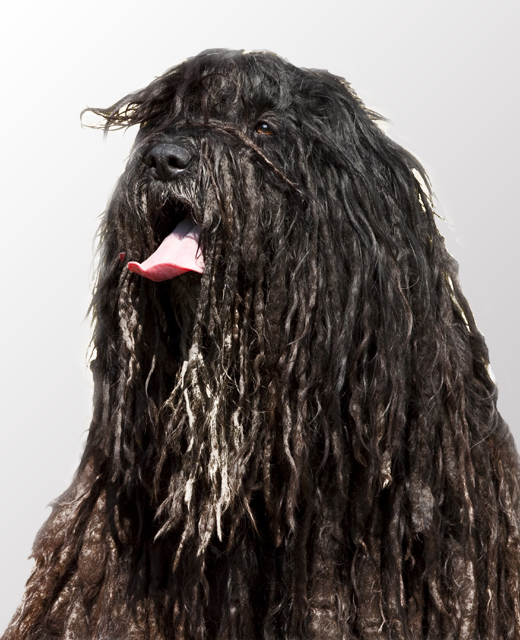
In my own words
How do you like my coat? You could say it’s my signature look! My humans keep telling me I look like Doogal from The Magic Roundabout but I wouldn’t know about that. It’s called flocked and it keeps me feeling really toasty and warm. It also protects me from predators, but that isn’t too much of a problem these days – it sure helped out my sheep herding ancestors in the Alps though!
What was that noise? I’ll go and check it out. I just want to make sure you’re safe; keeping you protected is my top priority, after all. Oh, it’s somebody at the door. I know you say you know them, but I’m going to keep an eye on them anyway. I don’t trust strangers!
After he’s left I’ll play with the kids, you know how well I get on with them. Maybe we could all go on a really long walk later, too? I’ve only had one walk today and I could fancy another… Are there any sheep around her for me to herd?
My ideal owner(s)
Families
People who like long walks
People who are active
People who live in the countryside
Experienced dog owners
What they say about me
Protective of family
Excellent watch and guard dog
Patient and gentle with children
Active and alert
Please read on to find out more about me, and whether I’ll be someone you’ll be happy to live with for the next 15 years!
Is this Bergamasco for you?
Test your knowledge about the Bergamasco
Information essential about the Bergamasco
Kennel Club Group:
PastoralSize:
Large: Weight Male 70 – 84 lb (32 – 38 kg) Female 57 – 71 lb (26 – 32 kg)
Height Male 23.5 – 24.5” (60 – 62cm) Female: 22” – 23” (56 – 58 cm)
Popularity:
Once protected from the outside world by local shepherds and farmers who prized the Bergamascos’ herding nature, the breed was kept pure and the line unaffected. However, economics came into play and a downturn in sheep herding resulted in Bergamascos being sold as pets as a way for shepherds to earn some extra money. The result was that the Bergamasco was bred with other herding dogs, making the pure breed rare and less popular. In fact, the Bergamasco came close to extinction until a group of well-intentioned and enthusiastic breeders saved from obscurity in Italy. Since then, the breed has once again been rising in popularity, though it still remains fairly rare.
Breed History:
The Bergamasco is an ancient shepherding and cattle dog which originates from Persia. Developed to be independent and intelligent, Bergamascos were owned solely for their work aptitude and shepherds kept this breed secret for a long time in order to keep the breed pure.
Bergamascos migrated from the Orient to the West as the nomads which owned them moved across the globe. Exchanges of dogs, would often take place at the same time as the sale of sheep, further spreading the reach of this unusual looking dog. However, it became most common in the Alpine Arc, where its sheep herding abilities were a real asset and the dogs’ distinctive felted coat protected it from both the elements and attacks from wolves, bears and other wildlife which may have attacked the flock. For this reason, it is commonly referred to as a native breed of Italy.
Character:
The Bergamasco was carefully bred to have superb shepherding skills. The result is a breed which is strong, brave and highly intelligent. Though your Bergamasco may not be used for herding now, its ancestors were needed to watch over hundreds of sheep, making them attentive, problem solving dogs which have a protective streak. The Bergamasco is also a peaceful and reserved breed which is well balanced and not aggressive. Due to the independent nature of your Bergamasco, you should always show him an air of authority. Never speak harshly to your Bergamasco, but let him know who is boss by being calm and firm with him, setting rules and being consistent in keeping them. This is not the best breed for timid people to own as Bergamascos are happiest with a natural leader.
Temperament:
Bergamascos were bred to work and that’s what they love to do. They are always taking in their surroundings and watching what you are doing. Their protective temperament makes them wary of strangers and they will take some time sizing up any visitors which you may have. The positive side of this is that your Bergamasco makes an excellent watch and guard dog as they will alert you to any intruders without hesitation. Despite their guarding nature, Bergamascos are not aggressive dogs and love their families, only showing their more hostile side when there is a threat to the people they love. The Bergamasco has an affinity for children due to its patient and protective personality; they have been used as therapy dogs for handicapped children. This is why Bergamascos are sometimes nicknamed ‘Nanny Dogs’.
Conformation:
A medium sized breed, a Bergamasco’s body should be well proportioned and solidly compact. Bergamascos should have dark, oval eyes and a dark nose. The skull is rounded, while the short ears fall in triangles. Underneath the long, rustic coat is a powerful build which attributes to his strength, speed and agility. Bergamascos have a very distinctive look thanks to their unusual coat, which served the dogs well while they herded flocks of sheep in the cold, harsh conditions of areas such as the Alps. The coat is long, thick and has a shabby, ragged look it. The characteristic look of the coat is down to the Bergamascos’ three types of hair which form long, matted flocks which start at the spine and go down the flanks, growing until they touch the floor. The dense, felted coat provided protection from freezing conditions and predators. A curtain of hair also covers the eyes, which would protect the Bergamascos’ eyes from the bright glare of the sun as it reflected off the snow in the mountains in which they used to live.
Colour:
The Bergamasco coat comes in a number of shades of grey, from pale silver to slate. This helped provide camouflage for the breed in snowy areas. Black and fawn colours are also seen and white patches may account for up to one fifth of coat.
Training:
Bergamascos are incredibly obedient dogs and providing they have a confident leader, they are an easy breed to train. They are very responsive to training and excel at agility classes. They love to please their owners, and submit to training as a way to show their affection, rather than showing submission. However, training must be done with respect, consistency, firmness and fairness as Bergamascos don’t respond well to harsh or heavy handed methods which tend to bring out their stubborn side. Positive reinforcement is recommended when training Bergamascos.
Care:
Bergamasco coats start out soft and fluffy when they are puppies, with the flocking stage starting between 8 months and one year and lasting until they are approximately two years old. Between the age of two and three, your Bergamasco’s coat will settle into a flocking pattern which will continue for the rest of his life. It is best to let the coat develop as naturally as possible, with little human intervention. Clipping or shaving a Bergamasco coat will destroy the flocks and the hair will grow out in massive matted clumps which cannot be combed. Once your Bergamasco’s coat is fully flocked, he’ll need very little grooming. The occasional brush will suit him just fine; just separate the flocks by hand and gently brush them, one at a time. Baths should only be given when absolutely necessary, as the coat can take a long time to dry. Seeing as the coat is low-odour this shouldn’t be too much of an issue. A bath 1 – 3 times per year is often enough, and spot cleaning when your Bergamasco gets messy is encouraged. The Bergamasco does not shed much, though you will find some hair on occasion during the puppy stage. When the coat is fully flocked, hair loss is minimal. The Bergamasco coat is considered hair not fur and is therefore considered non-allergic, however this is no guarantee that it will be suitable for those with allergies
Health:
The lifespan of a healthy Bergamasco is typically between 13 and 15 years. They are generally an incredibly healthy breed of dog which is considered to be hardy. There are no known health issues or concerns with them, though this is partly due to their rarity as very little research has been conducted into the Bergamasco breed.
You may also like:
If you like Bergamascos, you may be interested in breeds of the same size »
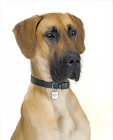

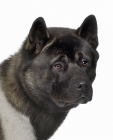

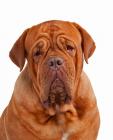
If you like Bergamascos, you may like other breeds with similar characteristics »
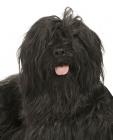
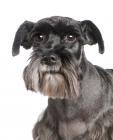

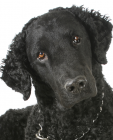
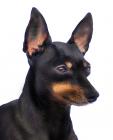
If you like Bergamascos, you may be interested in these other pastoral dogs »

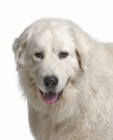
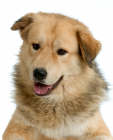

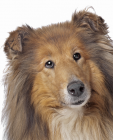
Advice on choosing your breed »
Find an animal shelter or rescue home where a Bergamasco is waiting for a new home »
The following grid gives a fast track review which covers all breeds. You can apply it to help you decide if a Bergamasco is suitable for you, the environment where you live, your personality and your lifestyle. On the grid, 1 = strongly disagree, and 5 = strongly agree. For example, if you are looking for a dog that is suitable for a farm, look down the list under ‘environment’ and you will see that Bergamascos are perfect for country living, scoring 5. If you are looking for a dog that would make a good watch dog, look under ‘role and suitability’ and you’ll see a Bergamasco would be an excellent choice, also scoring 5. You might like to save or print off this section and keep it for reference while you check some other breeds before making your choice.
Be the first to rate this breed »
|
*PLEASE NOTE: All our breed profiles are general, and all dogs are individuals. Always talk to the breeders and meet the owners you are buying from. Try to meet the dog and its parents if it is a puppy in their home environment.











